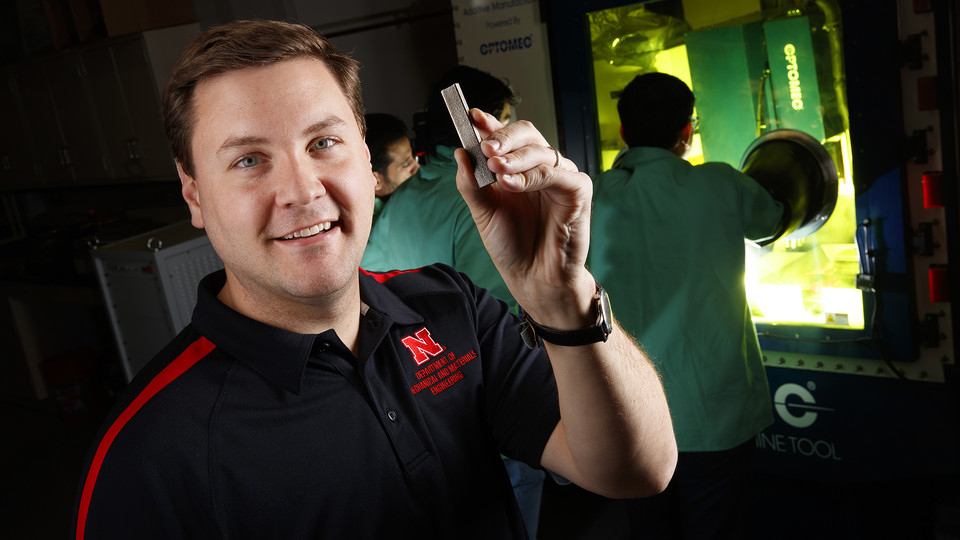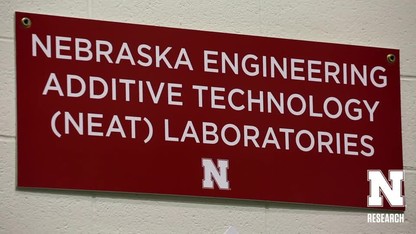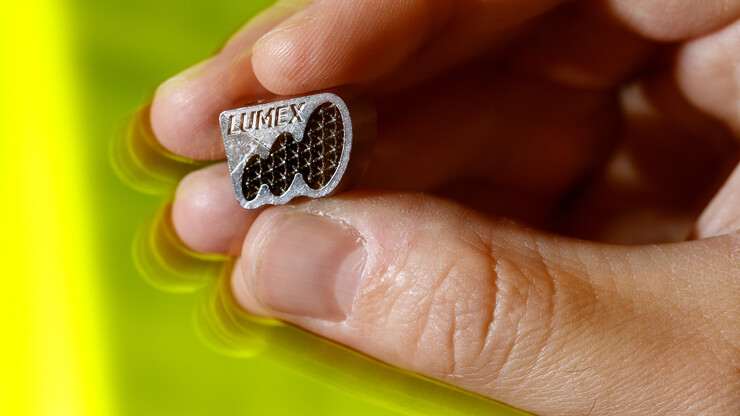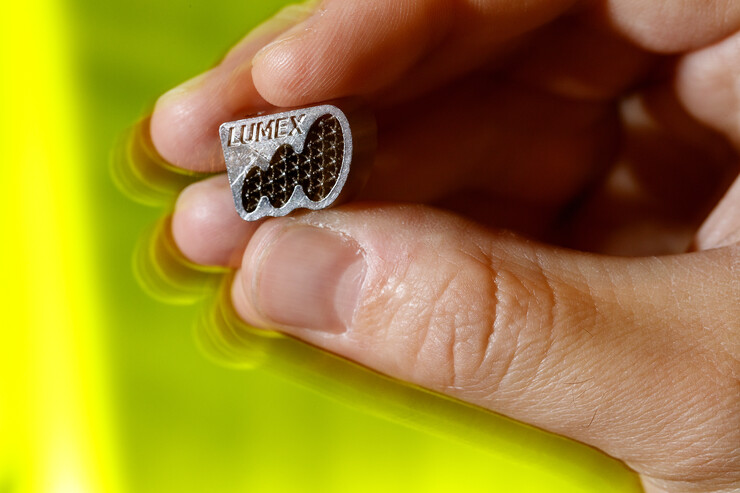· 5 min read
Award bolsters Sealy’s study of 3D printing for medical devices

Nebraska engineer Michael Sealy is hoping his new, high-tech approach to manufacturing will create a little mayhem as it changes the world.
By applying MAHAM — which Sealy pronounces “mayhem” — or multi-process asynchronous hybrid additive manufacturing techniques to 3D additive metal printing, Sealy hopes to create lighter and stronger metal materials that could have life-saving and money-saving applications.
“Essentially, what I’m talking about doing is printing my own 3D mechanical properties, and additive manufacturing allows me to do that in ways traditional manufacturing never had the ability to do before,” said Sealy, assistant professor of mechanical and materials engineering. “We’re going to cause mayhem to material properties in materials design to solve problems related to corrosion, fatigue and wear.”
Foremost for Sealy — and in his research supported by a five-year, $500,000 award from the National Science Foundation’s Faculty Early Career Development Program — is fine-tuning a process that allows researchers to make strong, dissolvable medical implants. These implants, he hopes, will both speed up a patient’s recovery process from major injuries and prevent the need for surgeries to remove the implants.
The printing of magnesium — a lightweight and highly reactive metal that is also biodegradable and dissolves in the human body — and using the MAHAM approach will allow Sealy and his team to go “layer by layer” to solve the problems of rapid corrosion and subsequent loss of structural integrity in conventional biodegradable implants.
This is accomplished by custom secondary processing of individual printed layers within the metal structure, perhaps peening one layer and using a different printing pattern on another, making the implants more customized to a patient’s needs. During peening, a metal’s surface is manipulated by a mechanical or laser process to improve its material properties.
“What we’ll do is see, not if we can tailor it to individual patients, because it isn’t practical to manufacture for 7 billion different solutions to the same problem,” Sealy said. “But maybe you can create options in a ‘shoebox’ model, where you have options for corrosion rates — one that disappears in four to six weeks, one in six to eight weeks, one in eight to 10 weeks.”
Sealy also said the right formula might depend on the application. For example, femur plates might need to degrade at a different rate than a clavicle plate.
“The good thing is that the right solution might be tweaking which layers we peen, instead of having to make a new coating or change the alloy,” Sealy said. “I just have to figure out the new formula to get the right range of degradation rates and understand the science driving this behavior. It’s very much doable.”
This MAHAM approach could also apply to manufacturing military and transportation components and for emerging technologies that are changing our daily lives, Sealy said.
“The cost savings by making airplanes lighter is obvious,” Sealy said. “But with ride-sharing services and autonomous vehicles becoming real options in transportation, we don’t know what the wear and tear will be on vehicles that run all day, every day.
“Right now, you may put 12,000 miles on your car every year, but we put them in parking spots for the majority of a day. Next-generation vehicles may log 300,000 miles in a year, and companies will need lighter, stronger parts that can sustain that level of wear and tear to keep them on the road.”
His being at the University of Nebraska–Lincoln, Sealy said, is the right place at the right time.
Nebraska’s College of Engineering and the Department of Mechanical and Materials Engineering invested nearly $2 million in three unique hybrid 3D printers and the new Nebraska Engineering Additive Technology Labs in Scott Engineering Center.
This research into MAHAM, Sealy said, will help keep the university on the cutting edge of additive manufacturing technology. The CAREER award will further that possibility.
“Every faculty member has that pet project of theirs that is close to them. This is it for me,” Sealy said. “I’m excited to see if this project snowballs into something bigger. I think it will shake up the world.”











